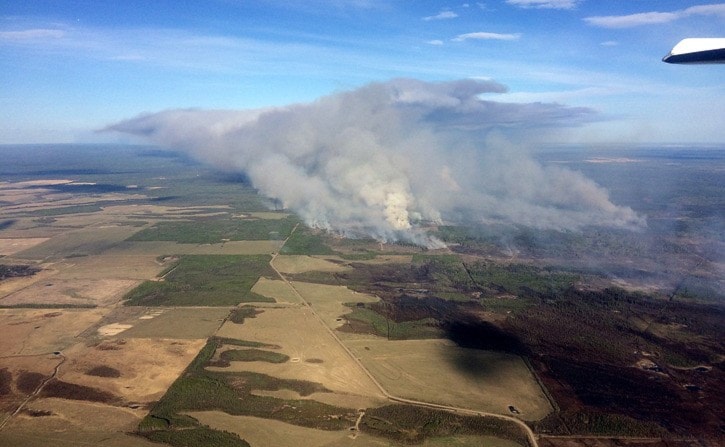The B.C. Wildfire Service calls them "wildfires of note," the largest, most aggressive or threatening to homes and businesses.
Weeks have gone by this summer with the "wildfires of note" list left blank, as an early outburst of northern B.C. fires has given way to one of the quietest forest fire seasons in recent memory.
But with a string of hot, dry days in mid-August after a cooler, wetter early summer, the B.C. Wildfire Service is attempting to keep things quiet. A campfire ban takes effect for the Coastal fire region on Wednesday, the first of the summer.
The Coastal fire ban includes campfires, open fires, tiki torches, fireworks and burning barrels. It covers the entire Coastal region except Haida Gwaii and the "fog zone" on the west coast of Vancouver Island.
As of Aug. 15, the B.C. Wildfire Service has recorded 846 fires with a total of 975 square km burned. The Prince George fire region accounts for more than 910 of that total, with another 50 square km burned in the Northwest region and the Cariboo region a distant third with eight.
So far the Coastal region has lost only 1.16 square km to wildfire, with 2.64 square km burned in the Kamloops fire region and 3.35 in the Southeast.
With the current forest fire season more than half over, the area burned is one third of that burned in 2015, which finished the season with 1,858 total fires.
Despite predictions that climate change is making each forest fire season worse than the last, recent statistics show that is not the case. B.C. recorded low fire seasons in 2007, 2008 and in 2011, where the season finished with only 126 square km burned and $54.5 million spent fighting fires.
Last year the province spent more than $200 million on firefighting, and nearly $300 million in 2014. The cost of each season depends on how many communities are threatened more than the size and frequency of forest fires.
Much of the Prince George area burned this year is accounted for by a cluster of fires that sprang up in April around Fort. St. John. After snow melted quickly and left large areas of dry dead grass on farmlands and road allowances, a string of unusually early fires sparked an arson investigation.
The largest of those, the Beatton Airport Road fire, reached 100 square km before being contained. The nearby Siphon Creek wildfire spread into northern Alberta, near where crews were struggling to save the town of Fort McMurray from another aggressive early spring fire.



